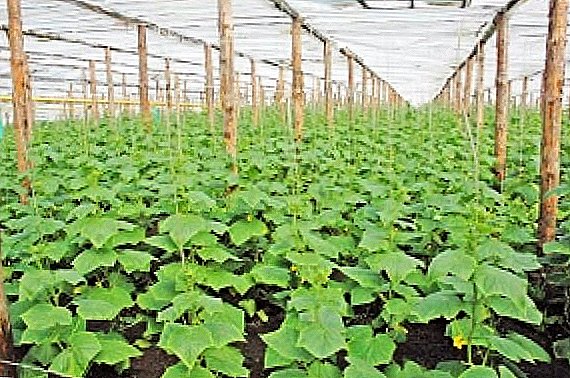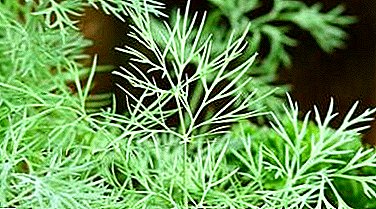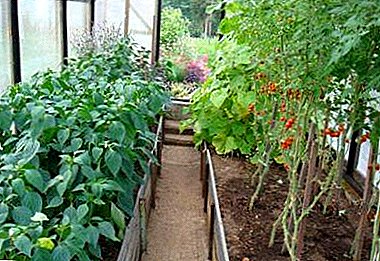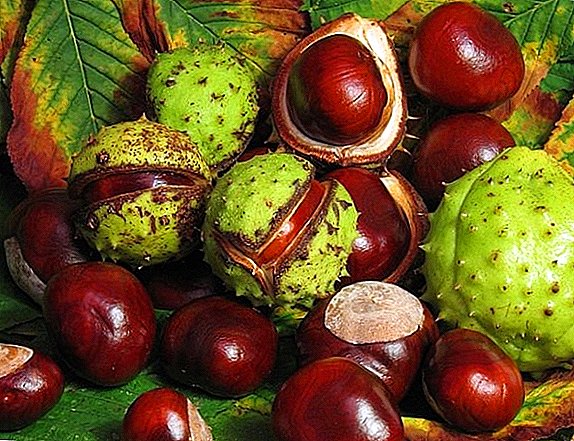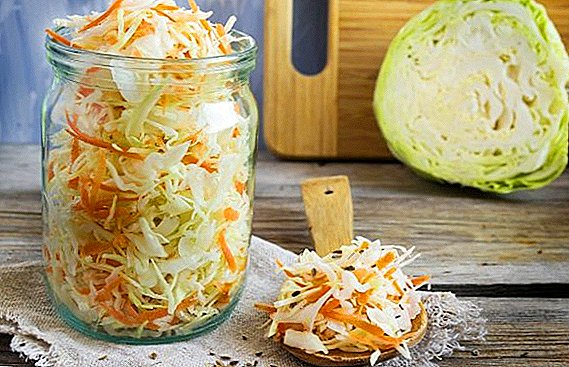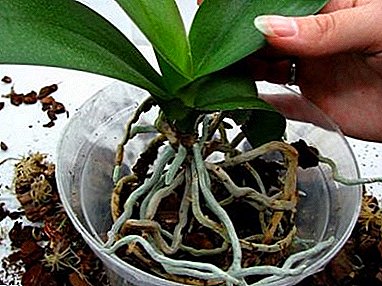
An orchid is an exotic plant belonging to a species of epiphytes. Epiphytes in nature do not live in the soil, but cling to some plant and take root in its bark. At the same time they feed on minerals from the environment.
In order to provide more natural habitat conditions for the flower, the choice of planting pot should be approached deliberately, not guided by taste preferences, but weighing all the pros and cons. Let's talk about it in our article. You can also watch a useful video on this topic.
Does the plant need a transplant to a new container?
Substrate store orchid often consists of wood bark with the addition of moss, peat, charcoal. The nutrients contained in such a mixture are enough for 2 to 3 years. Only after this period does it take to think about plant transplantation. And even if:
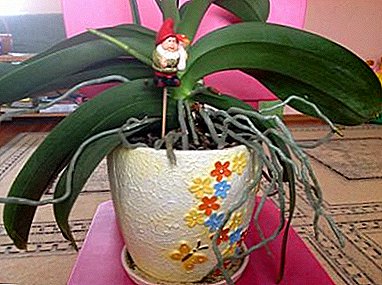 The root system has grown enormously, and the plant literally “jumps” out of the pot.
The root system has grown enormously, and the plant literally “jumps” out of the pot.- There was an unpleasant smell of mold, rot, and the roots of bright green (in the wet substrate) and silver-gray (in the dry substrate) turned brown or began to turn black.
- The general withered plant, the leaves began to turn yellow and dry.
- The substrate significantly subsided, and a lot of free space formed in the pot.
How does a good tara choice affect a flower?
When the question of orchid transplantation is resolved, the following arises: "Which pot to buy?". If the capacity is chosen correctly, taking into account all the peculiarities of this plant, and the transplantation is carried out in compliance with all the norms, then the flower will surely thank active growth, long and luxurious flowering.
Which container to choose?
Choosing the right pot is essential for the proper development of the orchid root system.. Consider which container is most suitable for this flower.
- A good orchid pot should ensure the outflow of excess moisture, air access to the roots, and the ability to safely remove a flower in case of such need. As a consequence, one of the main conditions is the mandatory presence of a drainage hole. Well, if these holes will be on the bottom and on the walls. If there are no drainage holes in the purchased container, it is easy to make them with a hot nail or a needle.
- When choosing the “right” pot, one should not forget that the root system of many orchid varieties is involved in the process of photosynthesis, therefore the best option is to have a clear container. Today, in specialized stores there is a rather wide assortment of pots of this type made of plastic. This material allows you to follow the development of the root system, the state of the substrate, the outflow of moisture, to maintain the optimum temperature, so necessary for the flower.
- Fans of everything environmentally friendly tend when choosing to clay pots: the material is natural, by production no toxic substances are used, the clay absorbs moisture well and passes air. But there are a number of nuances. Clay is a porous material, and the roots of an orchid often simply adhere to the container walls. This makes it difficult to transplant the plant, as there is a risk of injury. Clay packaging is still more relevant for experienced flower growers, but beginners should "get a hand" on growing orchids in plastic pots.
- The orchid container should be stable to avoid turning the pot over. Stability can give decorative pots, but you need to remember how to properly transplant: the distance between the walls of the pot and pots should be at least 1 - 2 cm.
Important: When choosing a pot volume, one must take into account the main principle: the height of the container must be equal to its diameter.
We recommend to watch a video about choosing the right orchid transplanting pot:
Which one doesn't fit?
 But there are a number of pots in which a delicate orchid should not be transplanted.. In them, the tender roots of the plant may start to rot and it will eventually die.
But there are a number of pots in which a delicate orchid should not be transplanted.. In them, the tender roots of the plant may start to rot and it will eventually die.
- For an orchid, transplanting into a glass container is unacceptable, as it will not allow the roots to "breathe." Such a container can perform only a decorative function.
- For the same reason, the ceramic pot is not suitable, which is covered with a layer of glaze: the air has absolutely no chance of penetrating to the roots.
- It should not be taken for a flower and an excessively large capacity, it is enough that the new pot will be 1-2 cm in diameter larger than the old one.
How to move a flower to a new container at home?
Consider how to transplant an orchid from one in which it grew, a pot in another. There are several flower transplant options..
From small to bigger
- Prepare the substrate, pot, expanded clay, activated carbon, scissors or shears. All antiseptic processing.
- The plant itself should be prepared, taking it from the old pot.
- When the roots of the plants are fully visible, it is necessary, after carefully examining them, to remove all the rotted areas with scissors or shears. Cut the powder with powdered activated carbon.
- The bottom of the pot should be filled with approximately 5 cm of expanded clay, so that water can drain, and with a small layer of substrate. On the received "pillow" to put a plant, straighten the root system, put too long aerial roots in the pot, and fill up all free places with the substrate. It should be evenly distributed between the roots, occasionally slightly crushing, the growth point of the orchid should not be covered with bark.
- It is necessary to ensure that the plant in a bulk container does not hang out.
We recommend watching a video about orchid transplanting in a large pot:
From big to smaller
Some varieties of orchids like cramped. Therefore, to choose for such plants should be pots 1 to 3 cm less than the volume of the root system. Also, if the orchid is very damaged when pruning the rotted roots, and their volume has decreased significantly, then a smaller pot will be needed for the transplant. The prep work will be the same as in the previous subtitle.
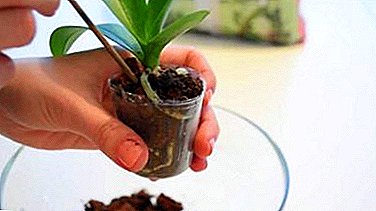 Prepare everything you need for planting, pre-treated with antiseptic: pot, scissors, substrate, expanded clay, activated carbon.
Prepare everything you need for planting, pre-treated with antiseptic: pot, scissors, substrate, expanded clay, activated carbon.- It is necessary to prepare the plant itself. When the roots of the plant are visible, it is necessary, having carefully examined them, to remove all the rotted parts with scissors or shears. Cut the powder with powdered activated carbon.
- Claydung placed on the bottom of the pot, sprinkle it with the substrate. The orchid needs to be seated so that there is a place for subsequent sprouts, and the old part is moved closer to the edge of the pot.
In opaque
- You will need a pot, pruner, substrate, expanded clay. Before transplanting everything needs to be sanitized.
- At the bottom of an antiseptic-treated pot, expanded clay and the substrate are poured in thin layers, the plant is placed in a container, the roots are spread, and empty spaces are covered with substrate. The florist should be guided by the appearance of the root system through the open part of the pot, which makes the planting process somewhat difficult.
We recommend to watch a video about orchid transplanting into an opaque pot:
Possible difficulties
- The plant is difficult to get out of the tank.. To avoid injury to the roots, the old container can be cut.
- The old substrate got lost in the room and is not separated from the roots.. The flower can be placed in warm water for a while to completely disintegrate the soil. Its remnants should be rinsed from the roots with a warm shower. Before planting, the roots must be well dried.
- When transplanted in the substrate and on the roots found pests. Then the roots must be thoroughly rinsed with running water and disinfected with special preparations that are sold in specialized stores.
Plant care after moving
After transplantation, the pot is placed in a room with a temperature of + 20-25 ° C (for 8–10 days) to a place where there is no direct sunlight. The first time watering with boiled water should be carried out on the fifth day, the second watering - after another 2 weeks, and feeding should begin only after a month.
Conclusion
Despite the common belief that orchid is a very demanding plantHaving understood all the nuances, it becomes clear: the care of this flower is not so difficult. This also applies to the transplant of plants, moreover, if all the conditions have been met, it will soon please its owners with violent flowering.


 The root system has grown enormously, and the plant literally “jumps” out of the pot.
The root system has grown enormously, and the plant literally “jumps” out of the pot. Prepare everything you need for planting, pre-treated with antiseptic: pot, scissors, substrate, expanded clay, activated carbon.
Prepare everything you need for planting, pre-treated with antiseptic: pot, scissors, substrate, expanded clay, activated carbon.
